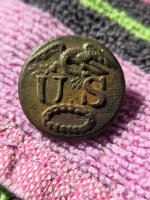KGC4Dixie
Jr. Member
- Sep 13, 2009
- 94
- 3
How to Make Convincing Fake-Gold Bars, by Theo Gray http://www.lewrockwell.com/spl/how-to-make-fake-gold-bars.html
Dec. 16, 2009
On Wednesday, the BBC reported that millions of dollars in gold at the central bank of Ethiopia has turned out to be fake: What were supposed to be bars of solid gold turned out to be nothing more than gold-plated steel. They tried to sell the stuff to South Africa and it was sent back when the South Africans noticed this little problem.
This is an amazing story for two reasons. First, that an institution like a central bank could get ripped off this way, and second that the people responsible used such a lousy excuse for fake gold.
I consider myself something of an expert on fake gold (I'm not really, I just think I am) ever since I was asked to give advice on the subject to the author Damien Lewis for his recent thriller, Cobra Gold. I worked out in detail for him how you could make really convincing fake gold, and ended up as a minor character in the novel, where I am known as "Goldfinger Gus".
The problem with making good-quality fake gold is that gold is remarkably dense. It's almost twice the density of lead, and two-and-a-half times more dense than steel. You don't usually notice this because small gold rings and the like don't weigh enough to make it obvious, but if you've ever held a larger bar of gold, it's absolutely unmistakable: The stuff is very, very heavy.
The standard gold bar for bank-to-bank trade, known as a "London good delivery bar" weighs 400 troy ounces (over thirty-three pounds), yet is no bigger than a paperback novel. A bar of steel the same size would weigh only thirteen and a half pounds.
According to the news, the authorities have arrested pretty much everyone involved, from the people who sold the bank the gold, to bank officials, to the chemists responsible for testing and approving it on receipt.
The problem is, anyone who so much as picked up one of these bars should have known immediately that they were fake, no fancy test required. The weight alone is an instant dead giveaway. Even a forklift operator lifting a palette full of them should have noticed that his machine wasn't working hard enough. I think they must have been swapped out while in storage: Someone walked in each day with a new fake gold bar and walked out with a real one. If they were fake on arrival then everyone who handled them in any way must have either had no experience with gold or been in on the scam.
Dec. 16, 2009
On Wednesday, the BBC reported that millions of dollars in gold at the central bank of Ethiopia has turned out to be fake: What were supposed to be bars of solid gold turned out to be nothing more than gold-plated steel. They tried to sell the stuff to South Africa and it was sent back when the South Africans noticed this little problem.
This is an amazing story for two reasons. First, that an institution like a central bank could get ripped off this way, and second that the people responsible used such a lousy excuse for fake gold.
I consider myself something of an expert on fake gold (I'm not really, I just think I am) ever since I was asked to give advice on the subject to the author Damien Lewis for his recent thriller, Cobra Gold. I worked out in detail for him how you could make really convincing fake gold, and ended up as a minor character in the novel, where I am known as "Goldfinger Gus".
The problem with making good-quality fake gold is that gold is remarkably dense. It's almost twice the density of lead, and two-and-a-half times more dense than steel. You don't usually notice this because small gold rings and the like don't weigh enough to make it obvious, but if you've ever held a larger bar of gold, it's absolutely unmistakable: The stuff is very, very heavy.
The standard gold bar for bank-to-bank trade, known as a "London good delivery bar" weighs 400 troy ounces (over thirty-three pounds), yet is no bigger than a paperback novel. A bar of steel the same size would weigh only thirteen and a half pounds.
According to the news, the authorities have arrested pretty much everyone involved, from the people who sold the bank the gold, to bank officials, to the chemists responsible for testing and approving it on receipt.
The problem is, anyone who so much as picked up one of these bars should have known immediately that they were fake, no fancy test required. The weight alone is an instant dead giveaway. Even a forklift operator lifting a palette full of them should have noticed that his machine wasn't working hard enough. I think they must have been swapped out while in storage: Someone walked in each day with a new fake gold bar and walked out with a real one. If they were fake on arrival then everyone who handled them in any way must have either had no experience with gold or been in on the scam.



 .
.
